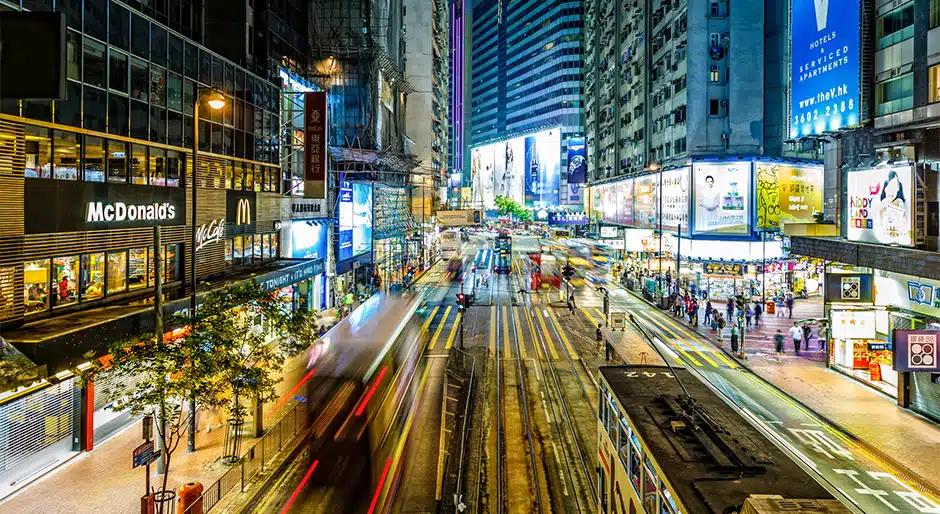Hong Kong’s Causeway Bay retains first place in global ranking of most expensive shopping streets
Hong Kong’s Causeway Bay has retained its crown as the world’s most expensive shopping street, followed by New York’s Upper 5th Avenue and London’s New Bond Street, according to new data from Cushman & Wakefield.
“The Hong Kong retail market has come under growing pressure from local social unrest that has led to a sharp drop in tourist arrivals and retail sales, as well as interruptions to retailer operations, especially during weekends. As a result, retail rents have fallen across all submarkets in recent months, and the outlook for the remainder of the year is muted,” said Kevin Lam, executive director, head of retail services, Hong Kong at Cushman & Wakefield. “However, some retailers see the current market correction as a rare opportunity to return to the high street, and we therefore expect some adjustment in retail trade mix. In particular, trades that focus on mass-market demand and local consumption, such as the education, lifestyle and sports/athleisure sectors, will fare better in the current environment. We are seeing a number of such retailers cautiously look for opportunities to expand or to seek a better rental package.”
Last year, Causeway Bay ended five years of domination by New York’s Upper 5th Avenue, and in the 2019 rankings, it retains its position with rents to locate a store amounting to $2,745 per square foot/year. Upper 5th Avenue is in second place at $2,250 per square foot/year, with London’s New Bond Street third in the global list, with annual rents at the London thoroughfare having risen 2.3 percent in the past 12 months to $1,714 per square foot/year.
Report author Darren Yates, head of EMEA retail research at Cushman & Wakefield, said, “In terms of rental performance, this year’s results are encouraging and demonstrate the resilience of the premier retail locations. Rents on the world’s top retail streets have been fairly stable and there is greater clarity on where retail is heading. However, there is downward pressure on rents in many weaker locations, particularly in the more mature markets of Europe and North America. In Asia Pacific, retail has generally performed well across a very diverse group of markets.”
In Europe, New Bond Street leads the way ahead of Paris and Milan, with Zurich’s Bahnhofstrasse at $866 per square foot/year and Vienna’s Kohlmarkt at $513 per square foot/year completing the top five. Overall, rents in around 70 percent of locations in Europe were stable or up on last year. Polarisation is evident, however, between the more established markets of North Western Europe and Southern, Central and Eastern Europe, where online sales have yet to really accelerate.
In the Americas rental trends have shown a wide degree of variation. Rents in Canada and the United States remain under pressure in many areas, although there can be significant variations between individual streets. There is some good news in that rents in New York streets appear to be stabilizing, following falls in recent years. Latin American retail markets continue to mature, although rents can be volatile.
The Asia Pacific region is in a relatively strong position, with rents in over 80 percent of locations covered either rising or stable. India recorded a particularly strong performance, with solid rental growth across several cities, while retail rents in Hong Kong have been resilient in the face of the recent protests — although the outlook is more uncertain.
Following initial concerns about the impact of online on traditional retail, the focus has now shifted to developing the “new retail” model, which blends the best of both in-store and online experiences. Shopping malls and retailers are now deploying smart technologies across the whole retail spectrum from merchandising to marketing and customer engagement, intending to improve operational efficiencies, reduce costs and enhance the customer shopping experience.
Yates said, “Online sales continue to increase around the world, but while much of the narrative is focused on the challenges the internet poses for traditional bricks and mortar, the relationship between the two is more complex. While quantifying the value of the store has become more difficult, it remains an important touchpoint for the consumer and generates both in-store and online sales by acting as a showroom and creating a wider brand presence — the so-called ‘halo effect’. The most successful retailers will be those who best integrate their physical and online operations to create a seamless, positive brand experience for shoppers.”

